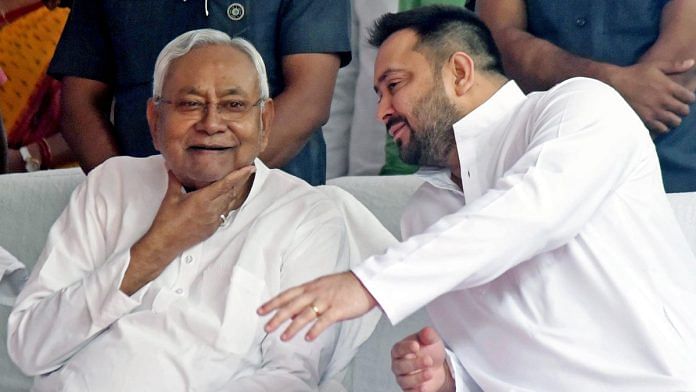Nitish Kumar’s strategic release of caste survey in Bihar is a carefully orchestrated political overture. It’s almost like he’s tuning his political instrument months before the crucial assembly polls in Chhattisgarh, Madhya Pradesh, Rajasthan, and Telangana, not to mention the grand spectacle of 2024. The political guru, it seems, is collectively squinting at this move, trying to decipher its implications. It’s not just numbers on paper; the enumeration has a potential of narrative shift. As we watch this political drama unfold, it’s hard not to be intrigued by the nuances, the hidden agendas, and the unspoken alliances.
While I welcome the survey, it’s also interesting to witness the political manoeuvring around the exercise, particularly as a member of the Pasmanda Muslim community.
It also leaves me with a sense of betrayal considering the Muslim community never had a caste-based survey. The release of caste data exclusively for the Hindus feels like a missed chance for honest representation of the marginalised sections within other religious groups, including my own.
The selective release of survey data has consistently prompted me to question the true intentions behind it. Does it really aim to ensure equal representation and promote social justice, or is it signalling the formation of a new identity bloc for political manoeuvring? Is this pursuit driven by a genuine desire for fairness and inclusivity, or is it a calculated move in the intricate game of political chess? In a diverse and pluralistic society, the imperative of achieving real social justice demands that every community, irrespective of religious affiliation, receives fair and inclusive representation. But the silver lining in the recent Bihar survey is the inclusion of caste data for Muslims. It acknowledges, in real sense, the nuanced diversity within communities and strives to ensure that the principles of social justice are extended to all.
Also read: Bihar census identified the privileged and under-privileged castes. Go national now
Why Muslims also need caste survey
It is disheartening to see how the Pasmanda society often gets overlooked and lacks proper representation because of lack of acknowledgement of caste-based divide within the Muslim community. Imagine if there were no caste-based data on the Hindu community. How would we know which specific caste within the Hindu community requires more representation and assistance for upliftment? Without this information, welfare schemes aimed at the Hindu community could easily miss the mark, reaching the wrong sections, or exploited by those who might not even need the support. It’s a stark reminder of how crucial accurate caste-based data on Muslim community is.
The Bihar survey provides compelling evidence of the existence of caste dynamics within the Muslim community. For a significant duration, Pasmanda leaders have argued about the presence of a caste-based hierarchy, facing skepticism from political leaders and intellectuals. However, this survey makes the picture clear, revealing that within the Muslim community in the state, 73 per cent are Pasmanda Muslims.
The survey findings reveal a diverse spectrum within the Muslim community in Bihar. Notably, 3.82 per cent identify as Sheikhs, enjoying privileges associated with the Ashraafs. Meanwhile, Ansaris, an integral part of the Pasmanda community, make up 3.54 per cent. The presence of Surjapuri Muslims, concentrated in and around Kishanganj, reflects a community facing economic and educational challenges, comprising 1.87 per cent. In addition, the Dhuniyas or Mansooris, classified under the OBC category, closely follow at 1.42 per cent. This data unveils a nuanced understanding of the socio-economic and educational dynamics, underscoring the diversity inherent within the Muslim community.
While political parties may view this data through the lens of vote bank politics, I believe there’s a more constructive way to utilise this information. Late parliamentarian Ashfaq Hussain Ansari’s revelation about almost all Muslim representatives belonging to the Ashraaf community, despite Pasmanda constituting more than 70 per cent of the population, is a wake-up call.
The discrepancy in Muslim representation in the Lok Sabha from the first elections (1952) to the fourteenth (2004) is stark. While Muslim population ranged between 10-14 per cent of the total population, their Lok Sabha representation stood at 5.3 per cent. However, the Ashraafs, comprising 2.1 per cent of the national population, held a representation of 4.5 per cent in the first to the fourteenth Lok Sabha. In contrast, the Pasmanda Muslims, accounting for 11.4 per cent of the population, had a meagre 0.8 per cent representation.
The new survey data from Bihar presents an opportunity for the community to realise the stark lack of representation and take proactive steps to address it. It opens the door for a fresh dialogue on inclusiveness within the Muslim community, prompting a collective effort to ensure equitable representation and opportunities for all.
Amana Begam Ansari is a columnist and TV news panelist. She runs a weekly YouTube show called ‘India This Week by Amana and Khalid’. She tweets @Amana_Ansari. Views are personal.
(Edited by Anurag Chaubey)



